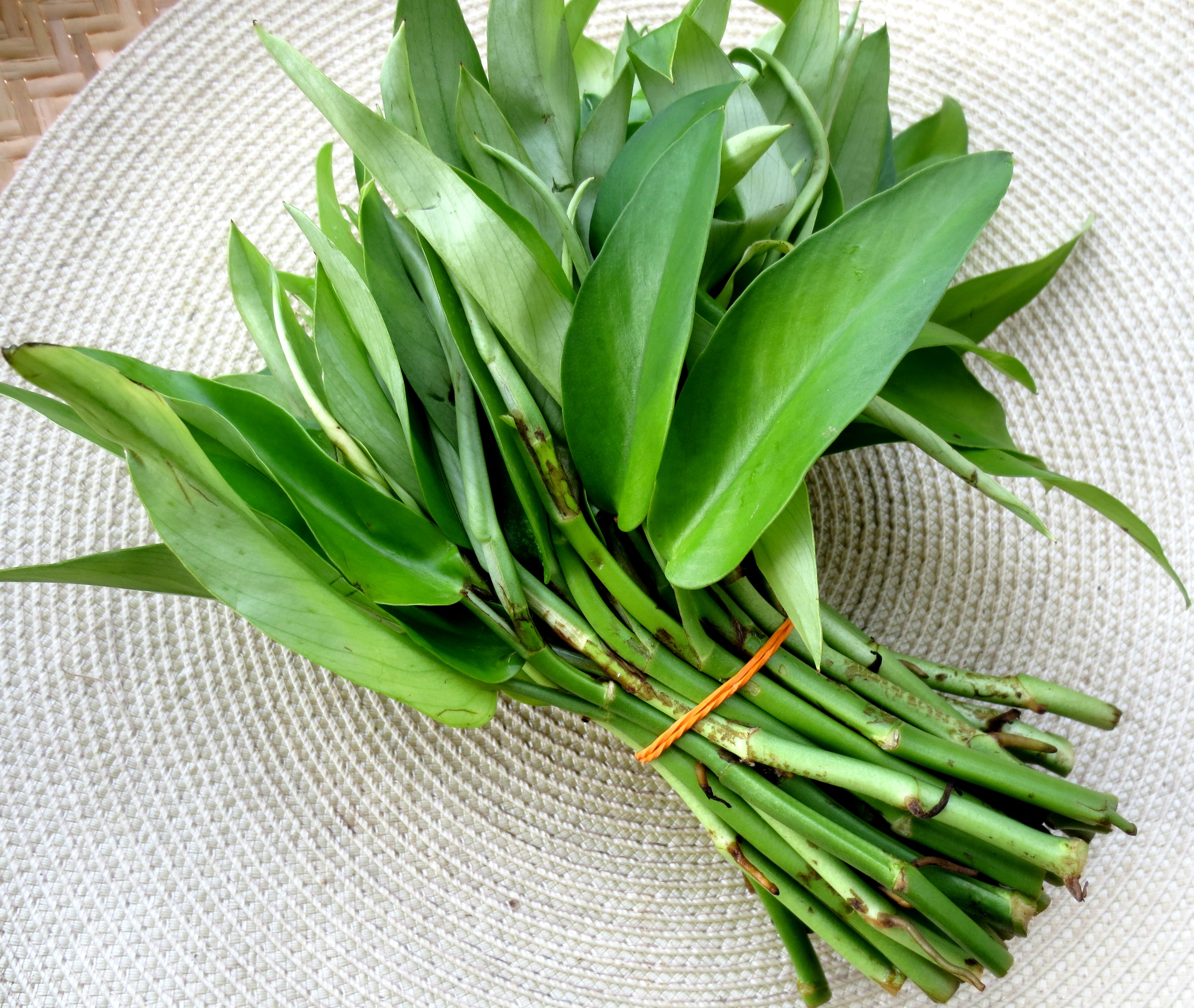Very often, we see yam stems or taro stems for sale in the markets but may look very alien to younger generation. This is a very good survival food. It is mostly wild and easily planted but can irritate the tongue, mouth and throat if a wrong variety is consumed. One word of caution – Taro/yam should never be eaten raw.

In Malaysia, we call taro as yam and this is commonly accepted among us but one should not mess up this yam with the real yam which means the Chinese Yam and the fake Chinese yam featured in my earlier post. The Chinese yam and the fake Chinese yam can be eaten raw. They taste sweet and slimy, great food for raw vegans.

Wild yam/taro in Sarawak is in the same family as the regular yam known as Keladi Cina or keladi Dayak with ID as Colocasia Esculenta. Wild yam grows well in wet land.Some are planted by natives. Taro or yam stems are sold in the markets in green and fleshy forms or ready-cut stems in baskets as shown in the picture above. The skin of the stems have to be peeled carefully before cooking to avoid its fibrous texture. This particular taro variety does not cause prickling sensation in the mouth and throat. To play safe, one can blanch the cut stems before cooking but most of us cook the stems straight away.
 Taro/yam plant growing wild in the wet land area in the city.
Taro/yam plant growing wild in the wet land area in the city.Special feature of wild yam is a maroon colored dot at the center of their elephant ear shaped leaf and the green stems. Usually we buy the stems from vendors whom we trust otherwise ending up cooking wrong type of yam stems causing prickling sensation in the tongue and throat. This is due to the toxin known as calcium oxalate crystals present in most taro plants except this particular wild variety.

Another feature of this taro plant is the absence of a fleshy root or tuber.The purpose of planting this plant is for its edible stems and shoots. Since this wild taro plant thrives very well in the villages so most people do not bother to plant it. In the city, we try to plant them near the ponds or wet land area.

Chinese way of cooking wild taro stems is simple, just stir-fry with yam/taro and fermented beancurd. Most natives would stir-fry with belacan and chilli. Local vegetarian belacan(fermented bean paste) or miso can be used in place of belacan.
The stem is tasteless but it has the spongy texture of patola or luffa. Cooking the stems with luffa or taro is the ideal recipe because the stems absorb and retain all the sweetness from luffa or cooked taro and make the dish very tasty. Strips of tumeric leaf can be added to the dish.

This wild taro plant produces shoots too. Shoots taste sweet but lack of the spongy texture of the fleshy stems. The procedure of preparing the shoots for cooking is the same as for the stems, i.e, peel the skin first and then cut into bite sizes. Cooking the shoots and stems share the same recipe.

The picture above shows another variety of taro plant with a maroon dot at the center of the leaves with purple stems. The stems of this variety are not edible. However, it has big tubers that are edible.

The picture above shows another survival food plant called emparuk(Malay) or Paru(Bidayuh). Its scientific name is monochoria vaginalis. It is known as water hyacinth. It is an aquatic plant growing wild in wet padi fields, ponds and drains. Many of you gardeners must have noticed its pretty purple flowers. The leaves are blanched and cook like kangkong, the water spinach. Its leaves have high content of potassium and iron. It looks a bit like taro plant so please check on the flowers before consuming. Images of its flowers are not ready for display here.
Great food for survival,
Treasure them before they disappear ;
A lot of things to learn from our natives,
Let’s find more edibles from the wild.
Copyright claim – Do not crop any pictures from malaysiavegetarianfood.com. Do not share our pictures without any watermarked signature on them. Excerpts from our articles to be credited to malaysiavegetarianfood.com.
